Festivities in Eastern Slavonia: Things To Do in Spring
18 March 2022 - Spring is on the horizon! Ceremonies and events are slowly but surely moving outdoors and since TCN already covered “Five Places You Must Visit During Spring in Croatia”, this is a look into what festivities in Eastern Slavonia are happening during the new season.
Firstly, we need to start with the biggest city of Eastern Slavonia - Osijek. As usual, the greenest city in Croatia has various events that can fulfill any person's preferences: from music, film, theater, and traditional events to sports and other activities that include all of citizens and guests. Since there is no shortage of events this spring season, we had to single out a few that will happen soon. It doesn't hurt to mention again that Osijek is going to host the 29th Porin Music Awards on the 25th of March. For more details, check the article here.
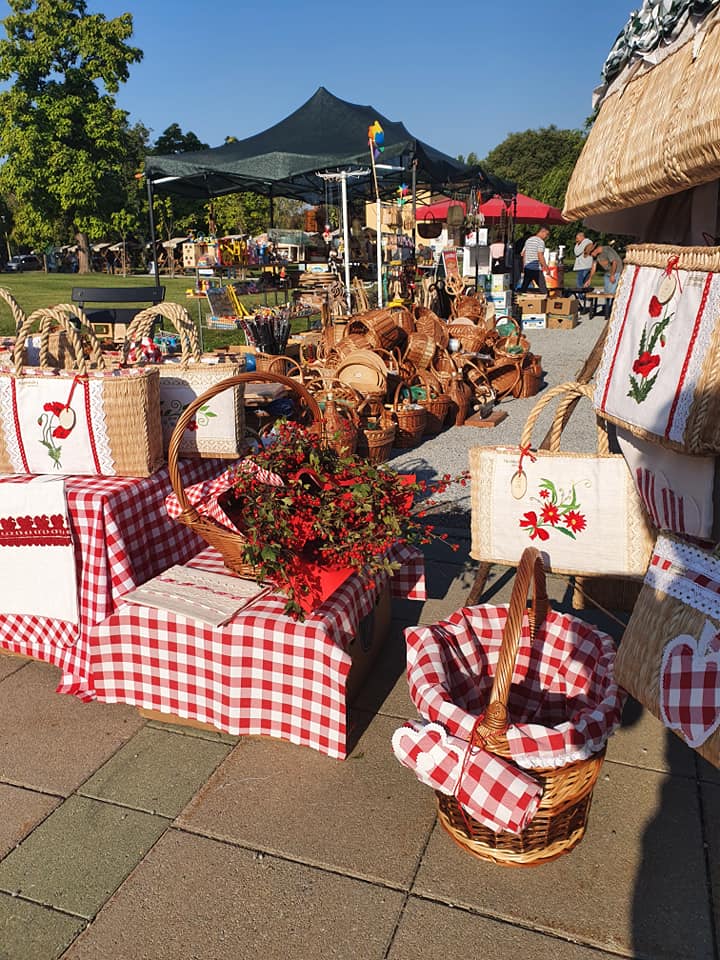
Antiques Fair, (Photo:Okusi sreće by Pavica/Facebook)
Antiques Fair - 2nd of April
The citizens of Osijek love their culture and heritage so it’s not surprising that the Antiques Fair is one the most popular events in the city. From old gramophone records to lost books and masterpieces from local unknown artists, this festivity is for everyone. Excitement as you pass by a sea of stalls that potentially contain a lost “treasure”? It is guaranteed only at the Osijek Antique Fair that is usually held on the first Saturday every month in the Old Town of the city - Tvrđa. However, the next Antique Fair will be held in King Držislav Park near the famous urban statue The Shell (Školjka) on the 2nd of April. The Park is located just across from Tvrđa, so it is not hard to find it. You can check for more here.
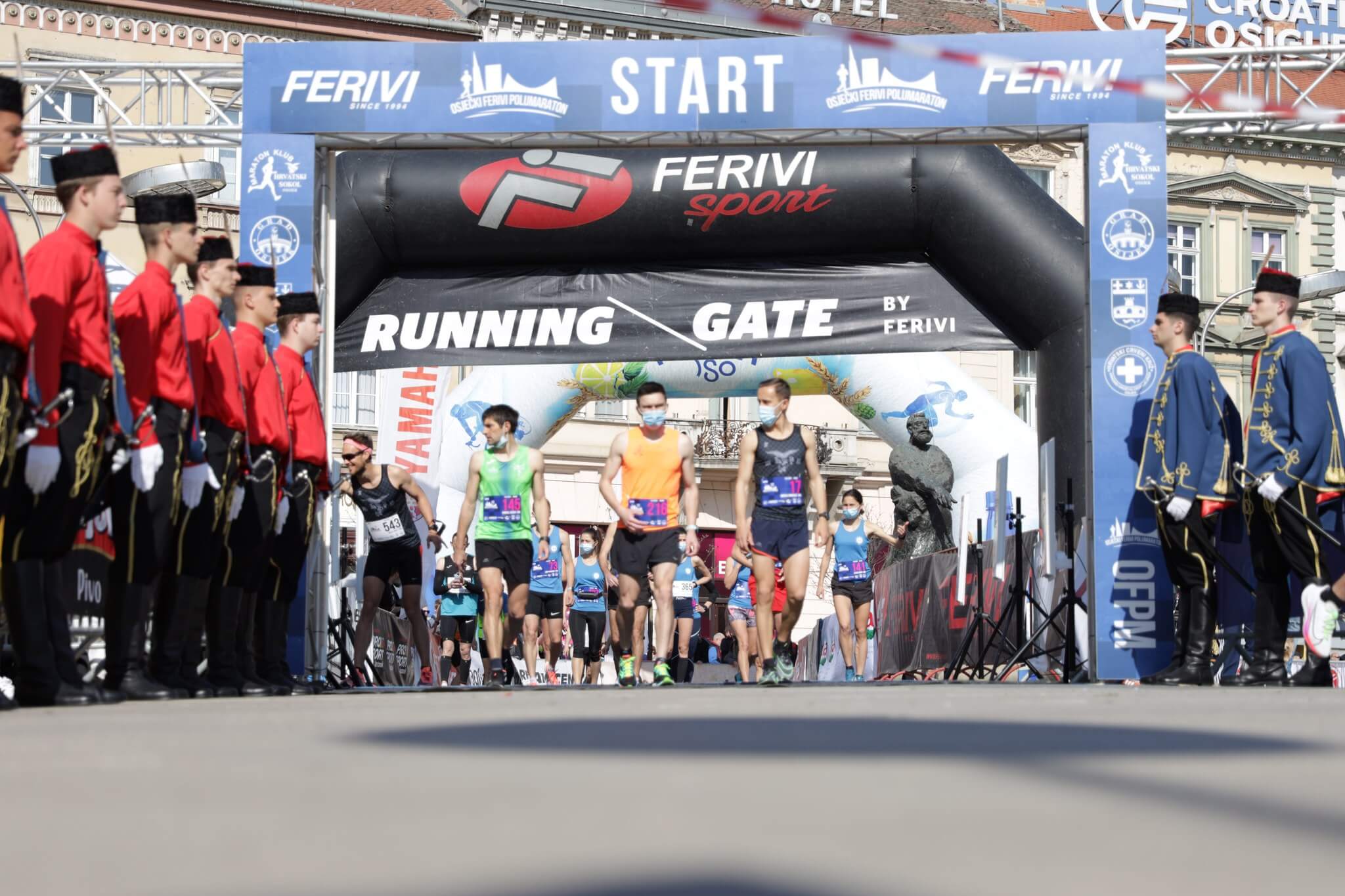
Osijek Ferivi Half Marathon (Photo Osječki Ferivi Polumaraton/Facebook)
18th Osijek Ferivi Half marathon - 9th of April 2022
This event, as the name suggests, will take place in Osijek, with four different races included: a half marathon (21.1 km), relay (3 x 7 km), citizens’ race (5 km), and a race for the youngest - children. These events will be accompanied by a music festival, instrumental, dance, and singing groups with a goal to entertain the visitors and competitors. Since its foundation, Osijek Ferivi Half Marathon has had an increase in the number of participants every single year and it’s becoming one of the biggest sporting events in Osijek and its surroundings. If you’re interested, the application is still open for everyone - it doesn’t matter if you’re a professional or casual, everyone is welcome!
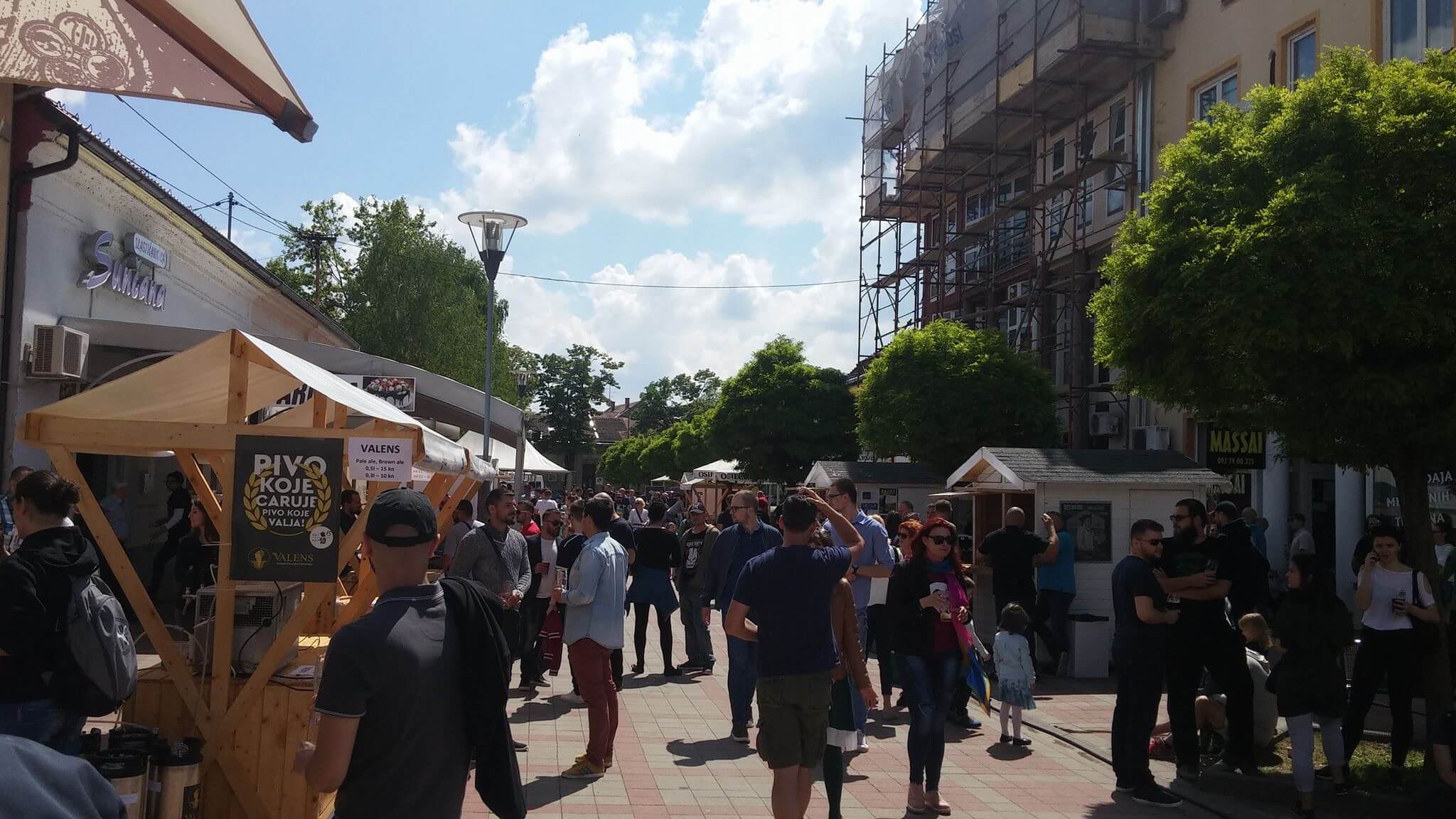
Craft Beer Festival in Osijek (Photo: Osijek CRAFT BEER Festival/Facebook)
Craft Beer Festival - sometime in May (to be determined)
How can Spring pass in Osijek without an event for beer lovers? In the last decades, Osijek has become a center for beer connoisseurs, not only in Eastern Slavonia but for beer enthusiasts all over Croatia. This fact is not surprising at all if we take into account that Osijek is also a center of multiple small breweries that produce various types of beers which have become iconic for this part of Croatia. Craft Beer Festival has been held last year during June but this year it’s probably coming back to its original date in May. We still don’t know the exact date. Nevertheless, the event will come back to the famous so-called “beer street” - Sun Street (Sunčana Ulica). For updates check their Facebook page.
If you’re interested in breweries in Osijek, check an article from our intern Toni.
After Osijek, we go further East and present cities of Vinkovci and Vukovar. Two historical Slavonian cities have a lot to offer with the support of surrounding small towns and their own events that enrich the lives of locals in Vukovar - Srijem County.
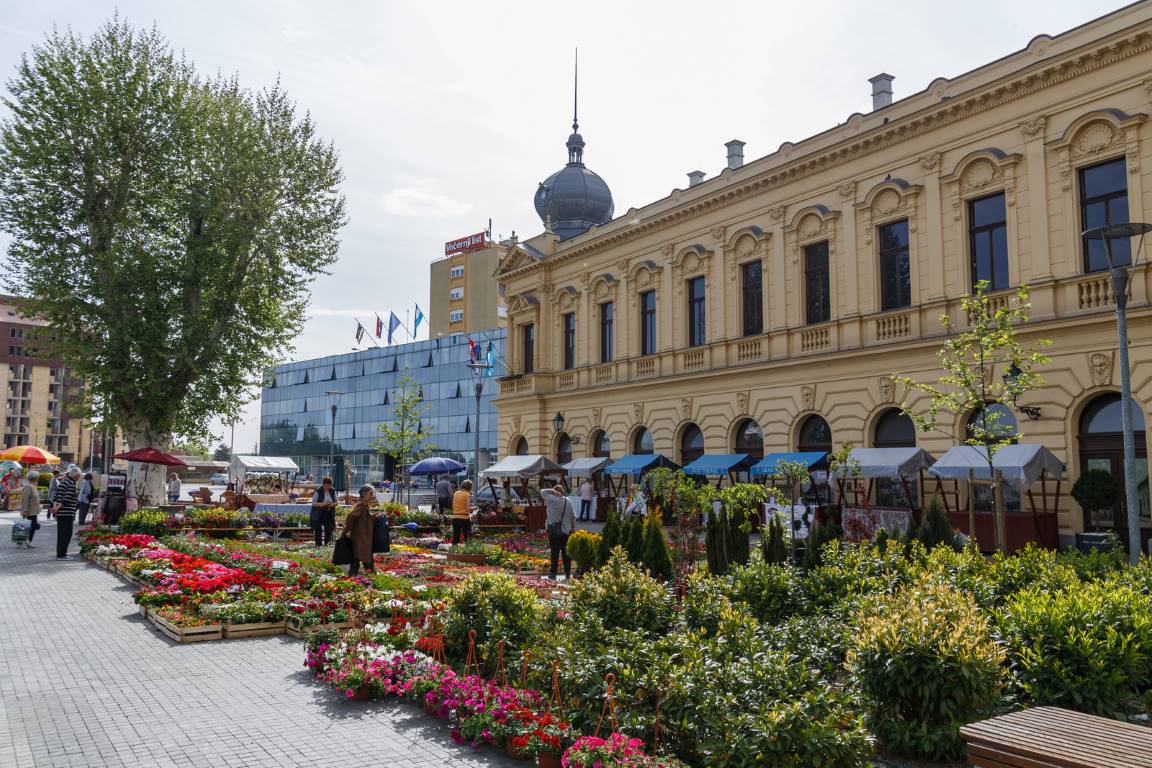
Flower Festival in Vukovar (Photo: Miroslav Slafhauzer/Turistička zajednica grada Vukovara)
Flower Festival - end of the April
Flower Festivals are a common event in Slavonia (we already had one in Osijek during Women’s Day). At the end of April every year, a Flower Festival is held in the center of Vukovar which brings together local and regional plant growers, florists, arrangers, related craftsmen, and lovers of flowers and ornamental plants. The Fair has sort of an exhibition and sales character which gives a completely different, colorful, and warmer look to the center of Vukovar. This event is also an overture for marking City Day.
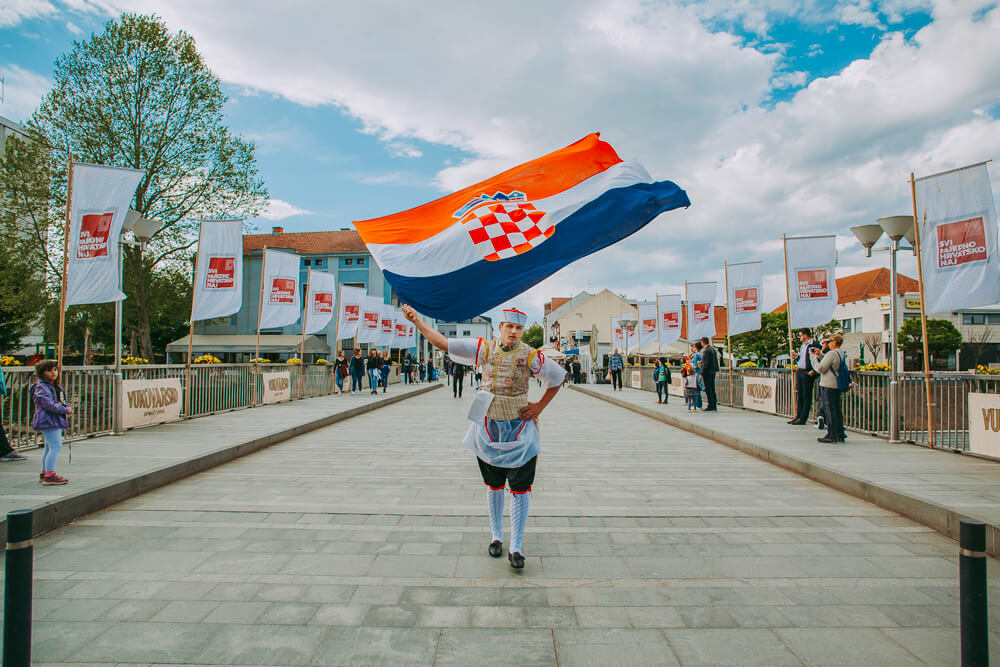
Svi zaJedno Hrvatsko Naj Festival in 2019 (Photo: svizajedno.eu/Galerija)
Svi zaJedno hrvatsko naj - cultural and tourist event - part of Vukovar City Day, 3rd of May
This festival is fairly new - it was firstly held in 2018, as a part of the European Year of Cultural Heritage. Its uniqueness lies in the fact that it is the first Croatian festival to present protected Croatian intangible cultural heritage on the national and UNESCO list with the most attractive tourist events, attractions, and destinations from all over Croatia. During the event, visitors have a chance of exploring various manifestations held all over Croatia by tasting autochthonous Croatian dishes and enjoying the offer of the best Croatian wines. Of course, what would be a Slavonian event without traditional music and dance groups? For more details, you can check their website.
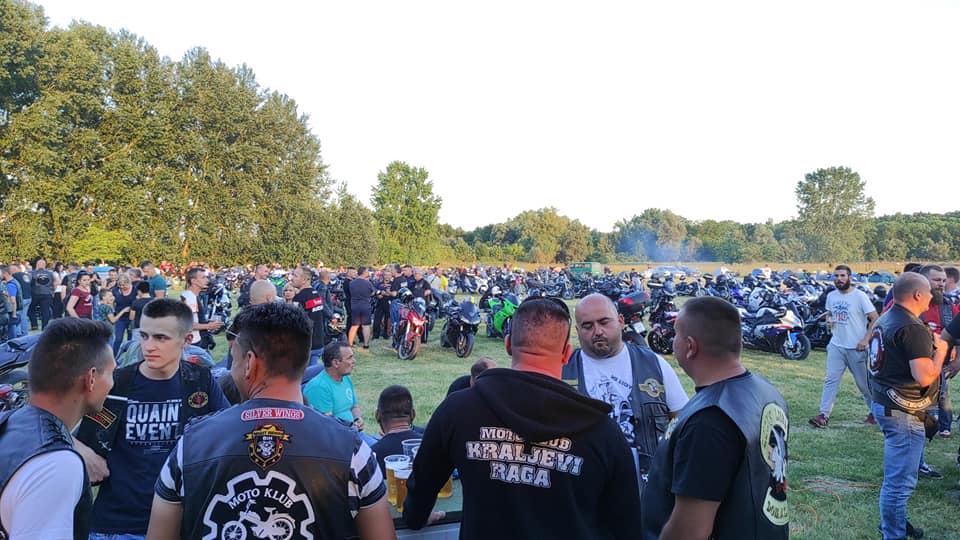
"Motorijada" in 2021 (Moto Klub Županja/Facebook)
Motorijada by Moto Club Županja - 10th of April
Motorijada (Moto Race) is an event that is organized by Moto Clubs all over Croatia. Motorcycle enthusiasts organize these events to promote, among other things, motorsports and use this opportunity to meet with their fellow motorcycle buddies. This April, Moto Club Županja is organizing the 16th Opening of Moto Season of Vukovar - Srijem County with the aim of drawing the attention of other road users to the presence and safety of motorcyclists in the traffic. They will start their tour in the village Rajevo Selo and go through multiple towns in Vukovar - Srijem County with the ending in the host city - Županja. Everyone is invited and if you’re a motorcycle enthusiast or just love looking at the motors, this is a great event to visit. For more information, check their Facebook page.
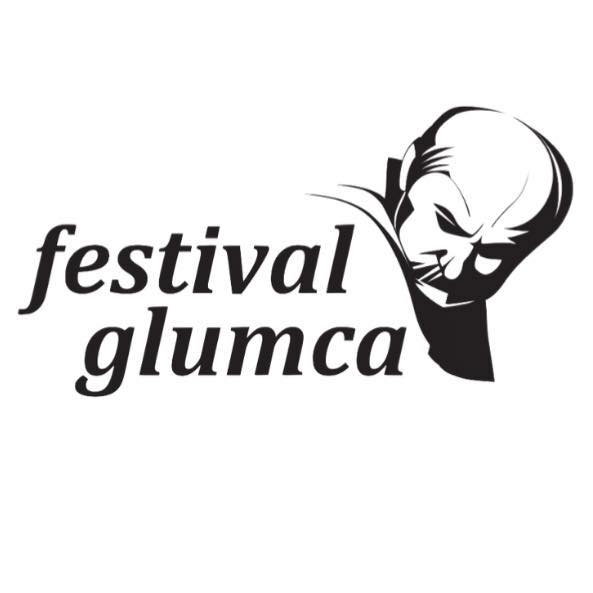
Logo of the Festival (photo: Festival Glumca/Facebook)
Actor’s Festival - all cities of Vukovar - Srijem County, 13 - 22 May
The festival was founded in 1994 by the Croatian Society of Dramatic Artists and Vukovar - Srijem County and it is the only festival in Croatia dedicated to the actor and their artistic work. Today, this event has grown into a festival that brings chamber and large ensemble performances to the audience. If you’re interested in the festival full of character, good acting, acting personality, talent, and originality, visit Vukovar - Srijem County from 13th to 22nd May this year. Every city will have its appropriate events surrounding this festival. For more, check their official website.
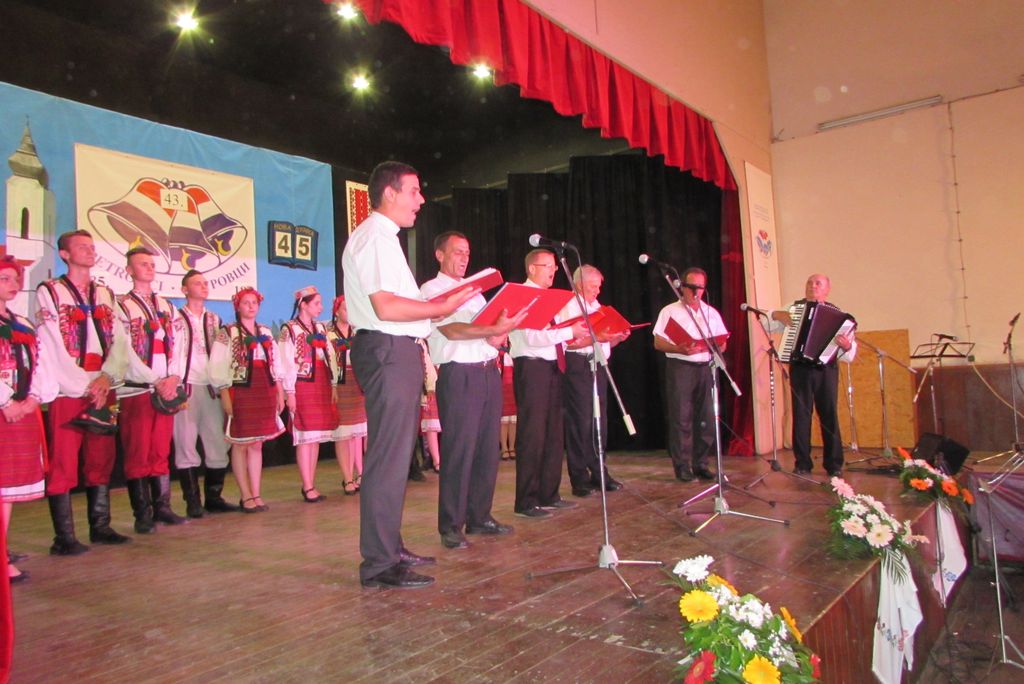
Petrovačko Zvono event few years ago (photo: savezrusina.hr)
Petrovačko Zvono - sometime in June, 49th edition
Rusyns are a national minority in Croatia with most of the residents residing in the village of Petrovci, which is located near Vukovar. Tradition, heritage, and constant maintenance of their culture for more than 40 years made this event one the most important in Vukovar - Srijem County. Rusyns from all over Croatia and other countries, visit Petrovci to connect to their fellow Rusyn people. They have a strong connection to Ukraine and their people, so if you’re nearby, visit this event, learn about the traditions of the people who’ve chosen Croatia as their home, and enjoy Petrovačko Zvono and its celebration of their heritage. For more details, you can visit their website here.
This is it for now. There are a lot more events that need mentioning, however, this article won’t be enough. TCN will bring you stories from some of these events and part two of places to visit in Eastern Slavonia is already on the way. Stay tuned!
Make sure to check out our dedicated travel section.
Carnival in Eastern Slavonia: February Masquerade Traditions (Part II) - The Food
February 23rd, 2022 - With every traditional festivity comes a reflection of our ancestors' lives, which ties closely to what they ate. This is part two of Carnival in Eastern Slavonia, but this time - the food edition. A look into what Slavonians eat during this traditional event.
Even though it was mentioned in the previous article that the roots of Carnival and Masquerade don’t have anything to do with Christianity and other religions, here in Eastern Slavonia, people decided to connect these traditions with Lent and Easter, which is usually a month and a half later in the Catholic calendar. Food is a significant identifier for every region in Croatia. For instance, Slavonia is popular for its heavy food: pork meat-based food like kulen, its “sister” seka, cracklings (čvarci), sausages, and stews made from beans, cabbage, and many more. Other homemade products are jams made from plums, quinces, apricots, and whatever fruits are available during the summer season. Furthermore, those jams are stored in cold pantries and can last for more than a year if it’s preserved and packed correctly. All mentioned dishes and products are consumed during winter until another set of preparations - always scheduled simultaneously and dated.
In February, these “heavy” dishes, especially dried meat ones like cracklings, are usually used for baked delicacies like čvarnjače, which are made so the leftover cracklings are not thrown away. They are made of salty leavened dough made out of fine flour with grounded cracklings (made out of melted lard) and can be eaten with sour cream or yogurt.
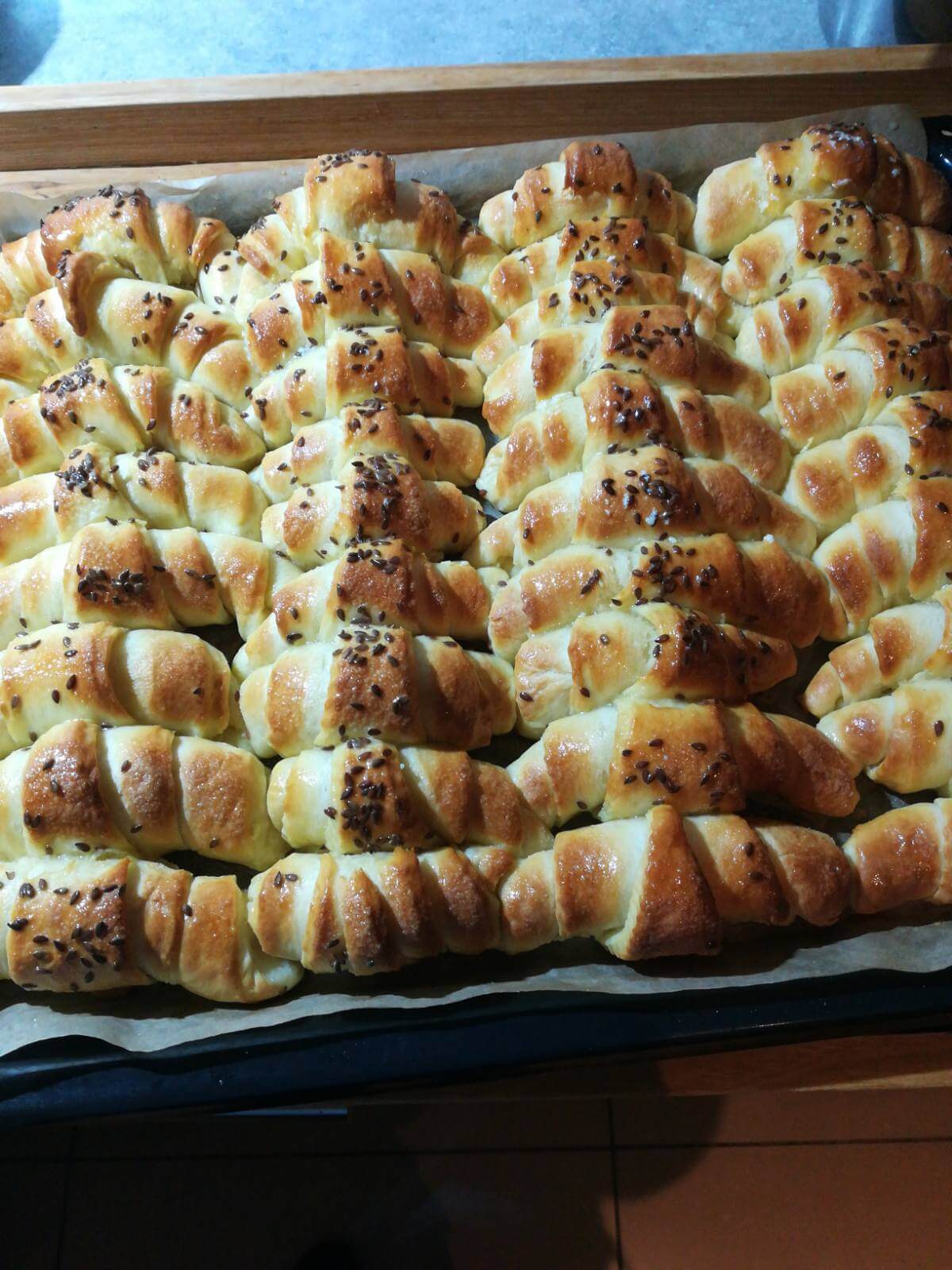
My aunts rolls - "kiflice," Private album
Rolls (kiflice) are also made from salty, leavened dough. Before putting them into the oven, they’re coated with eggs or milk for the colour and sprinkled with sesame or cumin. Since rolls are usually served empty as a snack, Slavonians eat them with a plate of dry meat like kulen, ham, and sausages. It can also be eaten with dairies. My personal favourite is when they are filled with ham and cheese.
Now we get to the good stuff. Sweet delicacies.
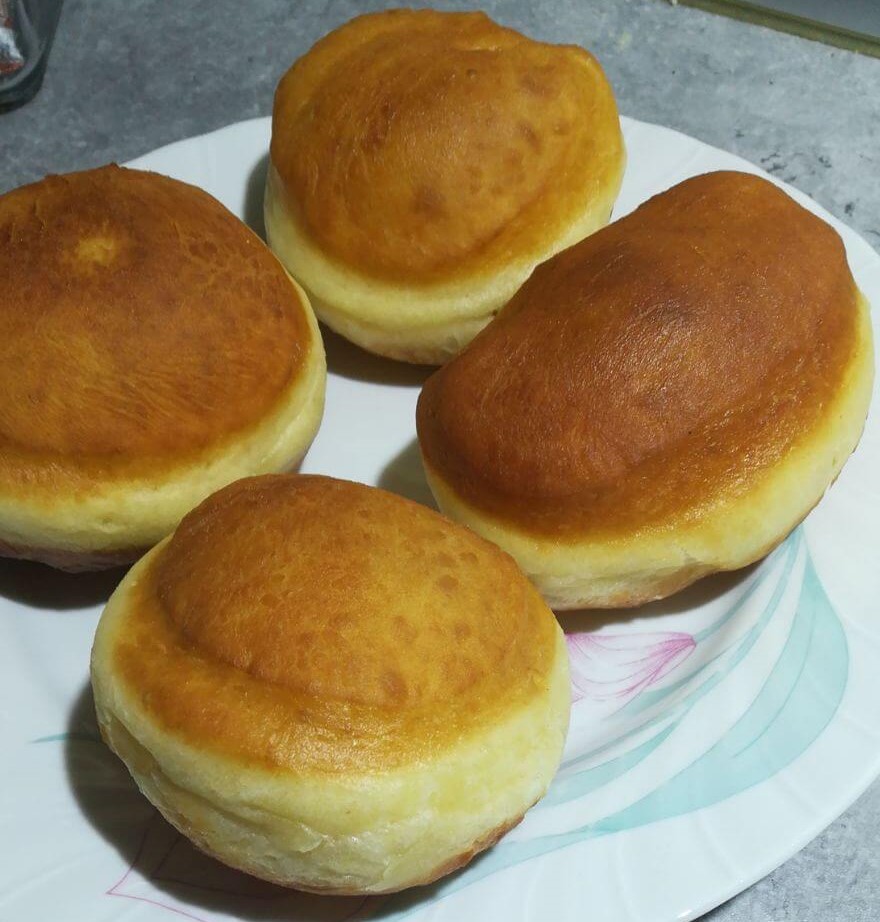
My aunts "krofne" , Private album
During carnival and masquerade in February, the most popular sweet food is donuts (krofne). It is a German sweet dessert made of leavened pastry, baked primarily in hot fat in these parts of the country or oil. In Slavonia, these donuts are called “krofne,” which is a distorted name from the German word “krapfen,” whereas in northern parts like Zagreb and the region of Zagorje, they’re called “krafne”. Interestingly, they’re not usually baked very often, only on special occasions, like “svinjokolja” (pig slaughter), New Year’s, and of course, Carnival. Furthermore, our ancestors believed that “krofne,” while being cooked and rising in volume, symbolizes grace in every aspect of life. Nevertheless, “krofne” are still very prominent in the lives of Slavonians, and they’re usually eaten with powdered sugar and homemade jams. Newer versions of “krofne” come with Nutella and other chocolate spreads, which are very popular with children.
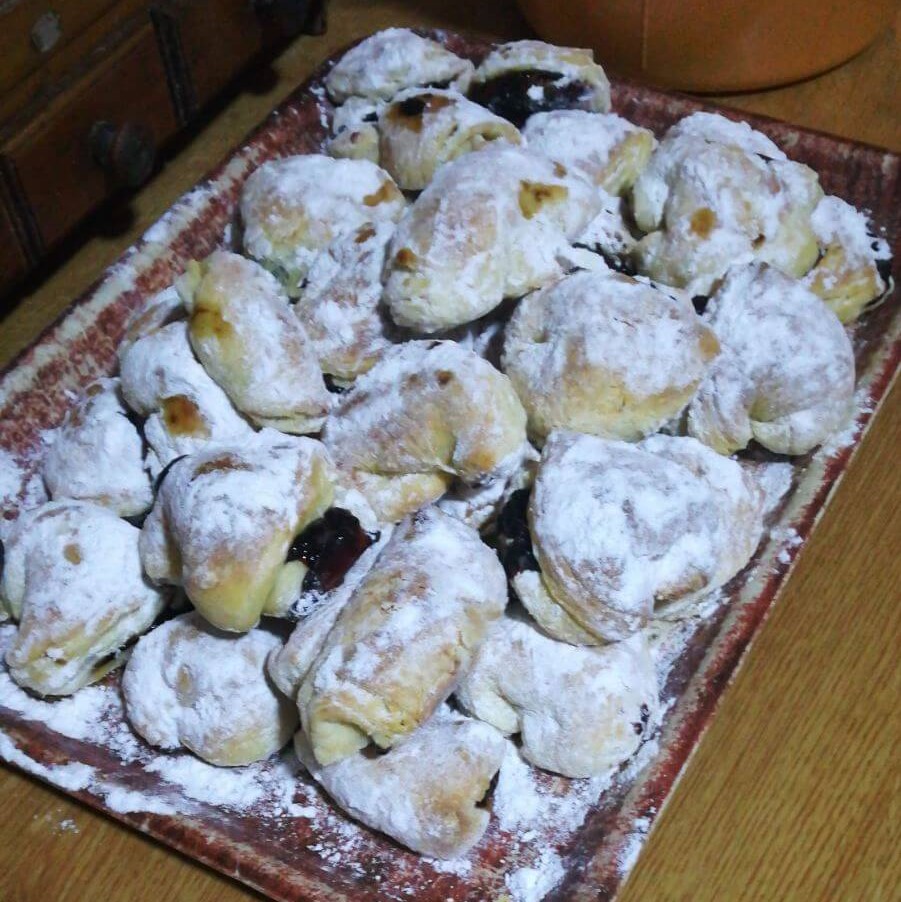
My aunts "salednjaci" - puff pastry dessert with homemade jam, traditional Slavonian delicacy, Private album
This sweet delicacy is a typical traditional Slavonian dessert prepared during “svinjokolja” and the Carnival - “salednjaci.” The name varies in other regions in Croatia; for example, in Zagreb and Zagorje, it is called “salenjaci.” Butter is a usual ingredient for puff pastry, but mothers and grandmothers would use pig lard because there would be a lot of it left after pig slaughter. Also, butter was costly back in the day, so people had to find ways to make those desserts. This delicacy is known as “Croatian croissants with character” and “a cake with thousand leaves” since the puff pastry is folded four times during the process. They’re usually filled with homemade blue plum or an apricot jam. Unfortunately, people have reservations about this dessert because of a misconception that pig fat or lard are not healthy.
On the contrary, it’s healthier than most of the ingredients we consume today. The dessert got lost in the last two decades or so, but it’s slowly coming back through the effort of institutions that preserve tradition and women who started bringing out this dessert on special occasions. Of course, that includes traditional events and festivities in Slavonia during wintertime.
Furthermore, sweet cakes and pastries like “mađarica,” “bijela pita,” “medena pita,” and more are also included on this list. Still, it would take a few more articles to name all traditional Slavonian food.
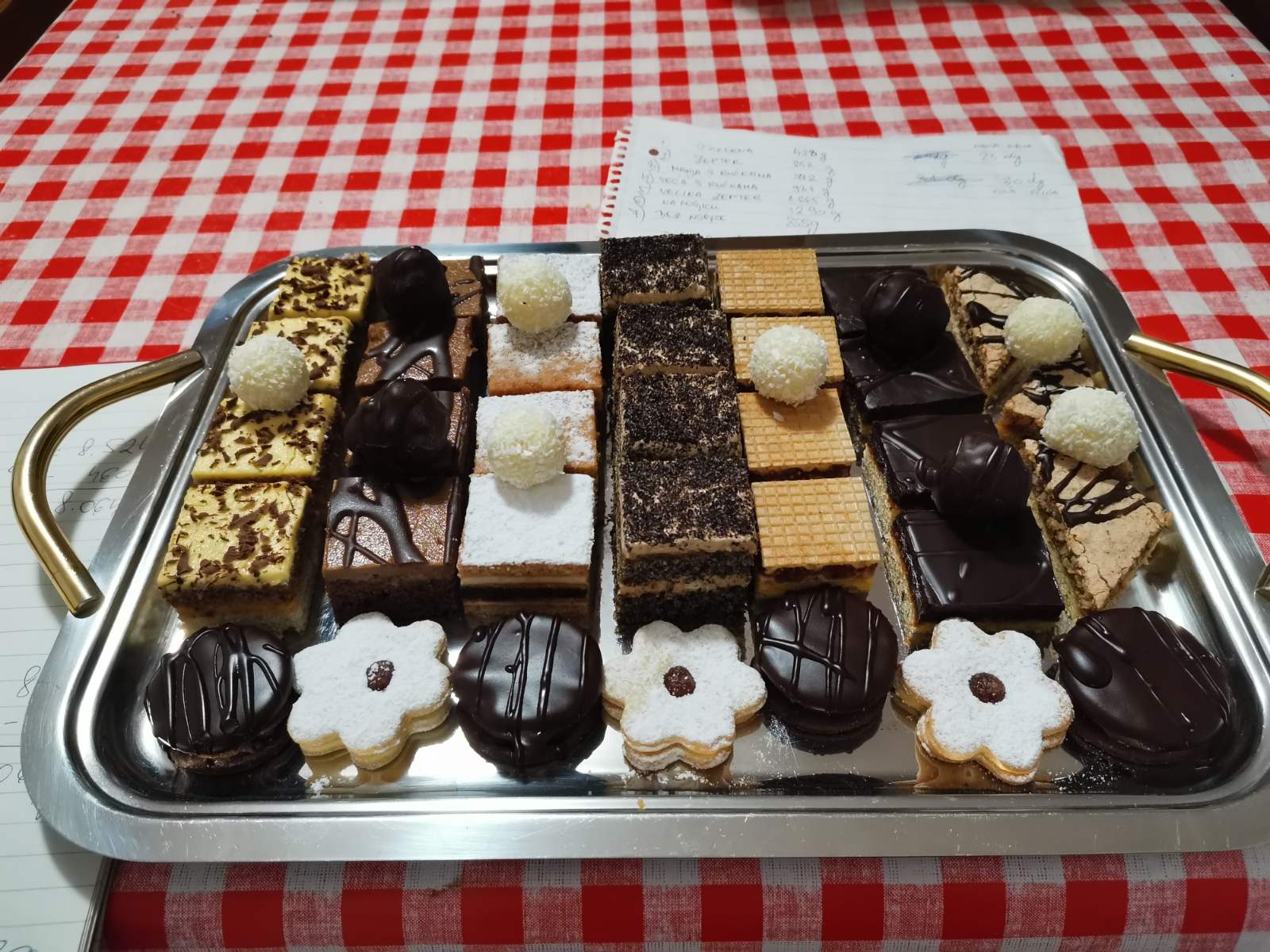
My mother's sweet cakes and pastries, usually made during winter times, Private album
In the end, this article can also be used as an invitation for you to come to Slavonia and participate in the Carnival and other festivities to try these rich delicacies that fed generations and generations of people and still do. There are seven days left until Lent, so hurry up and experience the rich Slavonian life because if there’s one thing Slavonians know how to do, it is eating rich and enjoying life.
For more, check out our lifestyle section.


